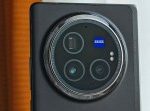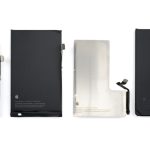AP
- Australia and New Zealand were two of the few US allies who sent troops to fight in the Vietnam War.
- They sent their top special-ops units, Australia’s Special Air Service Regiment and New Zealand’s Special Air Service.
- Those special operators quickly earned a reputation of bravery and professionalism.
Unlike the wars in Afghanistan, Iraq, and Syria, where US troops have fought as part of multinational coalitions, the Vietnam War was almost exclusively an American affair.
Only a few steadfast US allies contributed troops to the war. Australia and New Zealand were among them, sending their best troops.
Special Air Service from Down Under
US Army
The Australian Special Air Service Regiment (SASR) and New Zealand Special Air Service (NZSAS) are those two countries’ top special-operations units.
Both units trace their roots to World War II’s North Africa campaign, three years of bitter back-and-forth fighting in the desert between Allied and Axis troops.
During that campaign, Lt. David Stirling, an enterprising British officer, pitched and then created the Special Air Service to go after German and Italian supply lines and airfields. The unit recruited from across the Commonwealth nations, including Australia and New Zealand.
After the war, the Australians and New Zealanders who had served in the British SAS went home and argued to create their own versions of the unit.
The Long Range Desert Group (LRDG), another special-operations unit that worked closely with the SAS, was composed predominately of New Zealanders and influenced the NZSAS.
SASR and NZSAS in Vietnam
Michael Coleridge/Australian War Memorial
The SASR deployed to Vietnam in 1966 as part of the Australian Task Force, a brigade-size formation. Two years later, when New Zealand committed troops, the NZSAS joined the Australian unit and worked under the Australian SAS squadron.
Each of the three SASR Sabre Squadrons rotated to Vietnam for a year-long tour, completing two deployments each.
Before deploying to Vietnam, SASR and NZSAS went through extensive training. The selection processes and follow-on operator training courses focused on patrolling and small-unit operations.
“All SAS operators have to do a Patrol Course as part of their ongoing training to become fully qualified to wear the sandy beret,” Sam McDonald, a former Australian SAS trooper who served in Vietnam, told Insider.
The primary mission for the SASR and NZSAS was to conduct long-range reconnaissance patrols to collect intelligence for the Australian Task Force. However, as the war progressed, their assignments grew to include offensive missions, including kill-or-capture and direct-action operations, rather than just gathering intelligence.
By 1971, when the last NZSAS trooper left, the Kiwis had participated in 169 patrols, and their Australian counterparts had racked up about 1,200 operations. Their operations accounted for more than 500 enemy killed or captured, while they had only two troops killed in action.
Phantoms of the jungle
Bryan Campbell/Australian War Memorial
The Australian and New Zealand special operators quickly developed a reputation of bravery and professionalism in Vietnam. Some of their missions were memorable.
“There were reports from US Air Force of up to 700 NVA walking four abreast down the Ho Chi Minh trail and three SAS patrols were sent in to try to locate them,” McDonald said of one such operation.
“Our patrol found them when a platoon ambushed us as we were refilling our water bottles. A firefight ensued throughout the morning and into the afternoon when we were surrounded by these men, and it was a hot extraction with US jets and gunships shooting up the area where we got picked up from,” McDonald added.
On another occasion, an NZSAS patrol on a reconnaissance mission was patrolling back to its base after eight days in the jungle when the exhausted commandos stumbled upon the enemy.
The Kiwi commandos stayed low, hoping the enemy would pass without noticing them. But a couple of North Vietnamese sensed something and left the trail to examine the surrounding jungle. They didn’t return alive.
US Army
In 1969, an NZSAS patrol had just inserted from a helicopter for a five-day patrol. The Kiwi commandos didn’t know that their landing zone had been compromised and that North Vietnamese soldiers were waiting in ambush.
As the NZSAS troopers started off to their patrol, hell opened up on them, “and we went into this huge, deserted rice paddy at the edge of some scrub. It was going to be a five-day patrol, if I remember rightly. The patrol lasted 26 minutes and we covered 26 meters,” a former NZSAS operator said.
Those few hectic minutes felt like an eternity to the NZSAS operators, who fired over 400 rifle rounds and lobbed 25 grenades.
“It was a hive of activity of whatever the enemy were. I couldn’t tell you whether they were North Vietnamese or Vietcong because it was the wet season and the grass was very cool. There was a big clearance, so there’s quite a bit of time when you’re exposed to the possibility of ground fire,” the Kiwi commando added. “If everybody was yelling and chanting and nobody is listening then it’s chaos. And we all stayed in a little tight bundle. We only sorted out the tree line with gunfire.”
It was only after helicopter gunships reinforced the patrol that the NZSAS commandos could board the helicopter and exfiltrate.
Encounters like those were common, but the NZSAS and SASR troopers took pride in their ability to remain undetected in the jungle for long periods of time. They were so stealthy that their North Vietnamese enemies nicknamed them the Ma Rung, or “phantoms of the jungle.”
A solid reputation
Richard William Crothers/Australian War Memorial
The two units have developed a reputation for toughness, adaptability, and resourcefulness — a reflection of their countries’ history. SASR and NZAS operators are held in high regard by their foreign counterparts.
“I’ve only worked with Australians, and they are excellent soldiers. Really top-notch. Tough as they come and resourceful. They sometimes reminded me of the Marines’ [US Marine Corps] motto ‘make do,'” a retired Delta Force operator told Insider.
“I’ve also heard good things about the New Zealanders, though I never worked with them. Both units have a solid reputation” in the special-operations community, the retired operator added.
The relationship the US built with Australia and New Zealand remains strong. The two countries were the first to send troops to Afghanistan after the September 11 terrorist attacks. As in Vietnam, these troops were SAS commandos.
Stavros Atlamazoglou is a defense journalist specializing in special operations, a Hellenic Army veteran (national service with the 575th Marine Battalion and Army HQ), and a Johns Hopkins University graduate.
Powered by WPeMatico






